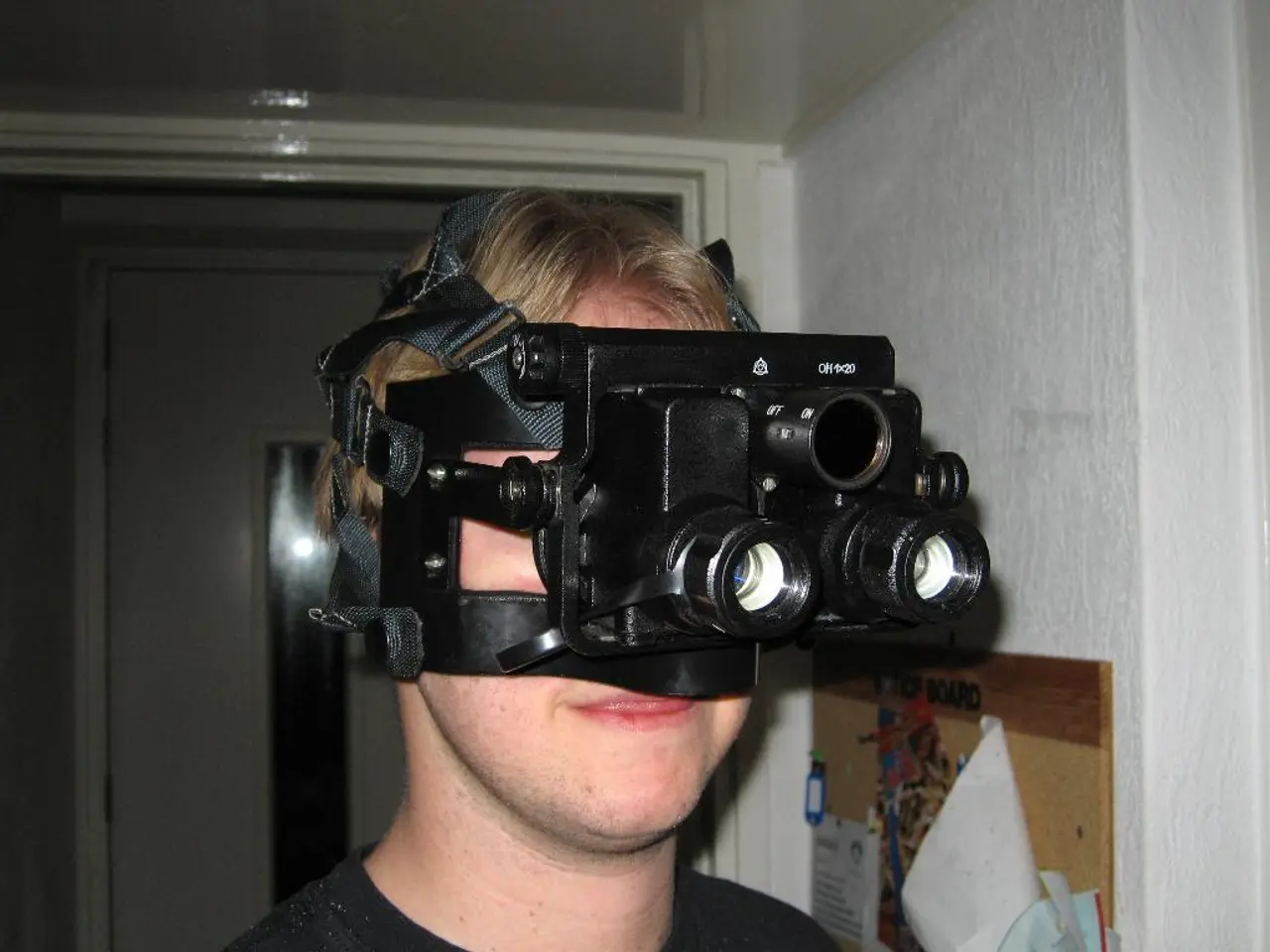Exploring Intricate Methods in Virtual Reality App Creation
Virtual Reality (VR) technology is revolutionizing user interaction with digital environments, creating immersive experiences that transport users to alternate realities. Exceptional design in VR development is crucial for delivering an outstanding user experience, encompassing not only visual aesthetics but also intuitive interaction design and seamless integration of user interface elements into the virtual world.
Developers optimize performance in VR applications by simplifying complex models, reducing texture sizes, and implementing level of detail (LOD) systems to maintain high frame rates. Advanced techniques in VR app development, such as complex programming, realistic graphics rendering, and responsive motion tracking, are essential for creating convincing VR applications.
Unity and Unreal Engine are two popular tools for VR development. Unity offers a broad range of tools that are specifically optimized for VR development, allowing for the swift creation of high-quality VR experiences. Unreal Engine stands out for its high-fidelity visuals and robust feature set, particularly favored for its advanced graphic capabilities and support for VR hardware. Advanced features in both engines, like real-time lighting, physics-based rendering, and spatial audio, enhance realism and interactivity.
Gesture control integration in VR applications provides a more natural method for interacting with the digital environment, contributing to a more engaging and effortless VR experience. Motion tracking technology in VR precisely captures user movements and translates them into the digital environment, enhancing the user's sense of presence.
Future advancements in VR technology include eye-tracking, foveated rendering, haptic feedback advancements, and improvements in wireless technology, creating more realistic and unrestricted virtual environments. High-quality audio in VR significantly enhances the user's experience by providing cues that complement the visual feedback and foster a sense of authenticity.
The latest advancements and trends in VR application development focus on enhanced networking, AI integration, improved hardware, and new interaction methods. Cloud rendering and edge computing reduce hardware demands on VR devices and improve performance. 5G networks provide ultra-fast data speeds, facilitating high-resolution visuals and real-time multiplayer interaction in VR. Mesh networking decentralizes connections between devices to ensure stable communication.
Artificial intelligence is increasingly embedded in VR apps to provide adaptive training and personalized experiences. AI can analyze user behavior to modify scenarios, deliver real-time feedback, and automate assessments, enhancing engagement and learning outcomes. AI also aids in generating VR environments from simple prompts, accelerating content creation.
Spatial audio technologies create more lifelike soundscapes, significantly enhancing immersion. Facial recognition and emotion tracking tools are beginning to be integrated to measure user engagement and tailor VR experiences dynamically.
Improved hardware, such as lighter, smarter, and easier-to-deploy VR headsets, expands accessibility, especially for event applications. Upcoming devices, like the rumored affordable Apple Vision Pro models, could further expand accessibility.
Technologies such as WebRTC support peer-to-peer real-time communication, reducing server loads and improving scalability, vital for collaborative and social VR applications. Cross-disciplinary collaboration between VR developers, AI specialists, and network engineers is essential for integrating these technologies and optimizing user experiences across sectors like training, events, and industrial applications.
Together, these technological trends enable VR applications that are more interactive, scalable, realistic, and accessible, shaping the future of VR development through a combination of networking innovations, AI-driven personalization, evolving hardware, and smarter interaction techniques.
- Innovations in VR technology, such as eye-tracking, foveated rendering, and improved wireless technology, are essential for creating more realistic and unrestricted virtual environments.
- Unity and Unreal Engine, two popular tools in VR development, offer advanced features like real-time lighting, physics-based rendering, and spatial audio to enhance realism and interactivity.
- Simplified design in VR development helps optimize performance in VR applications by reducing texture sizes and implementing level of detail (LOD) systems to maintain high frame rates.
- Artificial intelligence in VR applications provides personalized experiences by analyzing user behavior, modifying scenarios, and automating assessments, thereby enhancing engagement and learning outcomes.
- Activities in the field of VR application development focus on improving hardware, such as lighter, smarter, and easier-to-deploy VR headsets, expanding accessibility for events and industrial applications.
- Networking technologies like WebRTC support peer-to-peer real-time communication, reducing server loads and improving scalability, crucial for collaborative and social VR applications.




